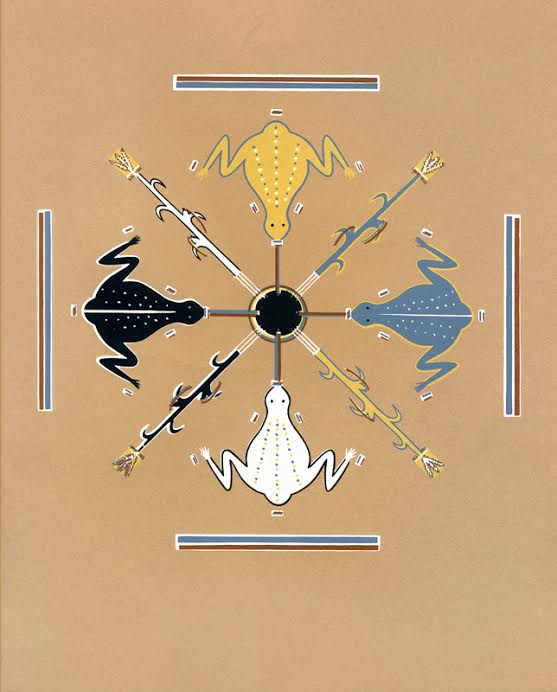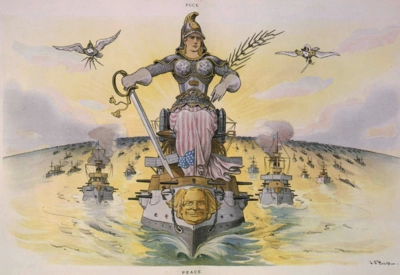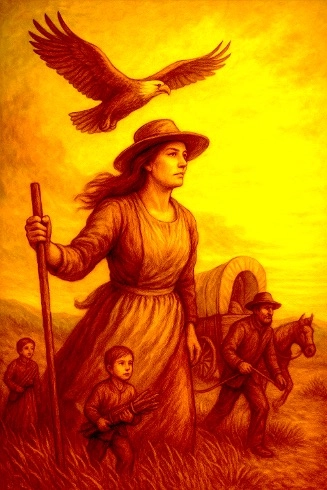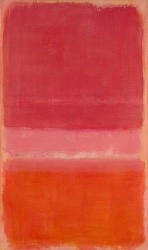ARAS Connections: Image and Archetype - 2025 Issue 2

At the heart of the ARAS enterprise is the notion that symbolic imagery has both a timeless and time-bound nature. That part of the symbolic image that is timeless carries meaning and emotional resonance across the boundaries of both culture and history. That part of the symbolic image that is time-bound originates in a specific time, place, and culture that has its own unique meaning and relevance. We do our best work at ARAS when we are attentive to both the timeless and time-bound nature of the symbolic image. Perhaps this idea is mirrored in Jung’s notion of the spirit of the times and the spirit of the depths, although for Jung there was a deep split between the spirit of the times and the spirit of the depths. It is possible that this split not be as radical as Jung experienced it and that we can experience both the spirit of the times and the spirit of the depths in symbolic images and in our everyday lives.
Each of the contributions to this edition of ARAS Connections move back and forth between the spirit of the times and the spirit of the depths; between touching the timeless while being rooted in the uniqueness of very specific times, places, and cultures. The first two contributions place the archetypal expression of a specific American historical myth in contemporary cultural context. The second two contributions show how archetypal themes have expressed themselves in the cultural context of the teachings of previous generations of Jungians.
Kaitryn Wertz takes up the theme of how a recurring historic American narrative, the Myth of the Frontier, is currently influencing the politics and psychology of the MAGA movement. She traces the archetypal theme of rebirth that has formed the core of the MAGA cultural complex and that has captured the imagination and psyche of many Americans who deeply believe that they are participating in the moral and spiritual rebirth of the United States. Wertz offers compelling symbolic imagery that brings into clear relationship the Myth of the Frontier and its current incarnation in the MAGA movement. Her essay is followed by my description of The Pioneer Spirit Cultural Complex which I developed as part of a broader inquiry into the major cultural complexes that are contributing to the contemporary polarization of the American psyche. This formulation of the basic characteristics of The Pioneer Spirit Cultural Complex is a preview of my soon to be published A Field Guide to American Cultural Complexes: The Battleground of the Splintered American Psyche.
The third paper is based on notes from a joint presentation in 1992 by the Jungian analyst Joseph Henderson and Fred Martin, a painter and Dean of Academic Affairs at the San Francisco Art Institute. In a wide ranging discussion they exchange views on how the relationship between inner and outer in the emergence and creation of images has changed over time. One can feel in their discussion the dialectic between the spirit of the times and the spirit of the depths.
The final part of this edition of ARAS Connections is a selection from the video series of workshops produced by Robin Jaqua that we have been featuring. The video--On Individuation--was produced at a time when Jung’s ideas were first being introduced to a broader public for the first time. Everything about the video production—the clothes, the manner of speech, the way of talking about Jungian psychology—reflects a very different time in the cultural history of the United States. It challenges the viewer to tease out what belongs to specific time, place and cultural history—the spirit of the times-- and what belongs to the more timeless tradition of analytical psychology grounded in the spirit of the depths. This tension between the time specific and the timeless, the culturally specific and the trans-cultural, the spirit of the times and the spirit of the depths are all inherent features of the Jungian tradition and of symbolic images that are the primary focus of ARAS and ARAS Connections.
Tom Singer
Editor, ARAS Connections
The Myth of the Frontier: The Archetype of Rebirth in an American Cultural Complex

“The psychologist cannot avoid coming to grips with contemporary history, even if his soul shrinks from the political uproar, the lying propaganda and the jarring speeches of demagogues. We need not mention his duties as a citizen, which confront him with a similar task.” C.G. Jung, 1964
The impact of the MAGA movement on American collective consciousness has polarized the populace with extremism and intense emotion. The heart of MAGA ideology is fear and demonization of the other — the immigrant, the person of color, the individual who doesn’t conform to traditional American norms of religion or gender expression. These must be eliminated so that “real Americans” can regenerate an imagined golden age. This is but the latest iteration of America’s oldest story, the myth of the Frontier, a potent psychological story that that has set American armies marching from the Puritan colonies to Afghanistan, wreaking devastation on those regarded as ‘other’ for four hundred years.
The complex social, economic, historical and religious factors that have contributed to the MAGA movement cannot be reduced to a single psychological formulation. However, a Jungian reflection on possible developments in the inner world of the American psyche may contribute to our understanding. From that perspective, the America’s collective consciousness is in the grip of a cultural complex. Singer and Kimbles’ (2004) extension of Jung’s theory of complexes to include the cultural complex provides a helpful lens through which to view current events. To summarize their work in brief, cultural complexes can be thought of as arising from a cultural layer of the unconscious, in interaction with both the archetypal and personal layers of the psyche.
The Pioneer Spirit Cultural Complex

Westward into the Unknown:
The Pioneer Spirit and the Longing to Begin Again
This symbolic image captures the soul of the American Pioneer Spirit cultural complex. A family moves steadily into an untamed horizon—led not by conquest, but by resolve. The mother leads with quiet strength, the child carries kindling for a future fire, and the father follows with labor-worn hands. Above them soars the eagle—not as dominator, but as guardian. Their journey is not one of certainty, but of faith in the open land and what might yet be born from it.
Core Emotion: Restless Hope and Heroic Autonomy
At the heart of the American Pioneer Spirit is a potent emotional blend: the yearning for renewal through movement, the pride of self-reliance, and the deep desire to forge identity through confrontation with the unknown. It celebrates courage, endurance, and the faith that new beginnings can be earned—if one is willing to leave everything behind.
Mythic Root: The Exodus and the Frontier Hero
This complex draws from biblical and mythic archetypes of exodus, pilgrimage, and heroic conquest. The pioneer is cast as both chosen and tested—like Moses in the wilderness or Odysseus on his long return. In American myth, this becomes the westward settler, the homesteader, the gold prospector, or the wagon-train scout. The land is not simply geography; it is a moral testing ground.
Read The Pioneer Spirit Cultural Complex in its entirety here.
On Art and Psyche

On April 5, 1992 the San Francisco Art Institute and the Friends of ARAS came together to sponsor a dialogue between Fred Martin and Joseph L. Henderson. Fred Martin is a painter and Dean of Academic Affairs at the San Francisco Art Institute. Joseph L. Henderson is a senior Jungian analyst and a founding member of the C.G. Jung Institute of San Francisco. The following lecture summary includes comments that the speakers made in dialogue with each other and with the audience following their formal presentations.
Fred Martin began his lecture by orienting us to his own background and training, noting that it was David Park who introduced him to the works of C.G. Jung, and Mark Rothko who taught him the importance of searching for the unknown. (See supplemental reading: Archetypes in the Studio by Fred Martin).
Mr. Martin went on to muse about a fantasized "great museum of the world" where all the pictures of all our lives and all the millennia adorn the walls. Using this image of "the great museum of the world" as a metaphor for the collective unconscious he went on to trace the changing images of Earth-and-Woman from the Paleolithic Venus carvings to Silbury Hill to Diana of Ephesus to the Madonna and on to contemporary representations of woman.
Preparation for Individuation
We are pleased to include another in the series of videos made by Dr. Robin Jaqua. In this video, Dr. Jaqua talks with Dr. James Witzig, Dr. Thomas Kirsch, and Dr. John Allan about preparation for individuation.
Contents
Become a Member of ARAS!
Become a member of ARAS Online and you'll receive free, unlimited use of the entire archive of 17,000 images and 20,000 pages of commentary any time you wish—at home, in your office, or wherever you take your computer.
The entire contents of three magnificent ARAS books: An Encyclopedia of Archetypal Symbolism, The Body and The Book of Symbols are included in the archive. These books cost $330 when purchased on their own.
You can join ARAS Online instantly and search the archive immediately. If you have questions, please call (212) 697-3480 or email info@aras.org
We Value Your Ideas
As our newsletter grows to cover both the ARAS archive and the broad world of art and psyche, we're eager to have your suggestions and thoughts on how to improve it. Please send your comments to info@aras.org. We look forward to your input and will reply to every message.
Subscribe
If you're not already a subscriber and would like to receive subsequent issues of this newsletter by email at no cost, e-mail us at newsletter@aras.org.
